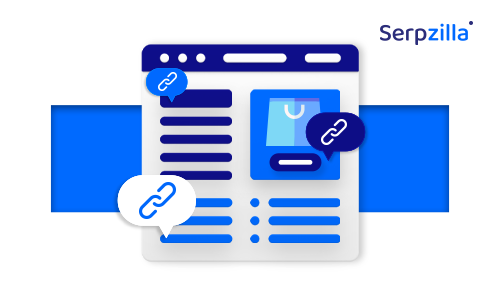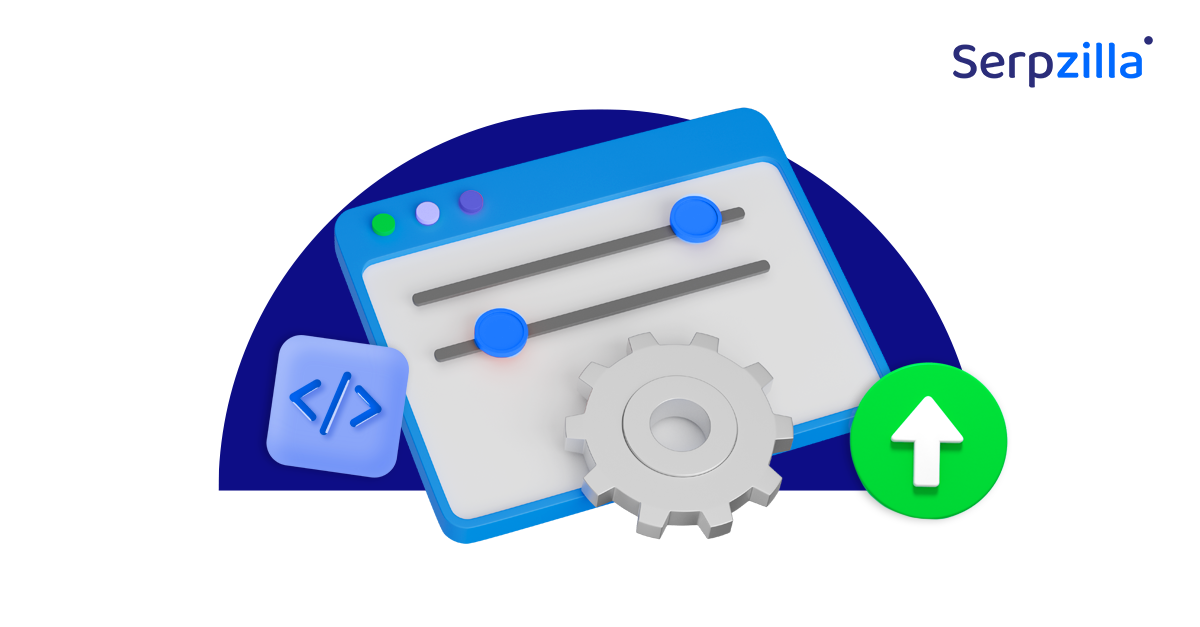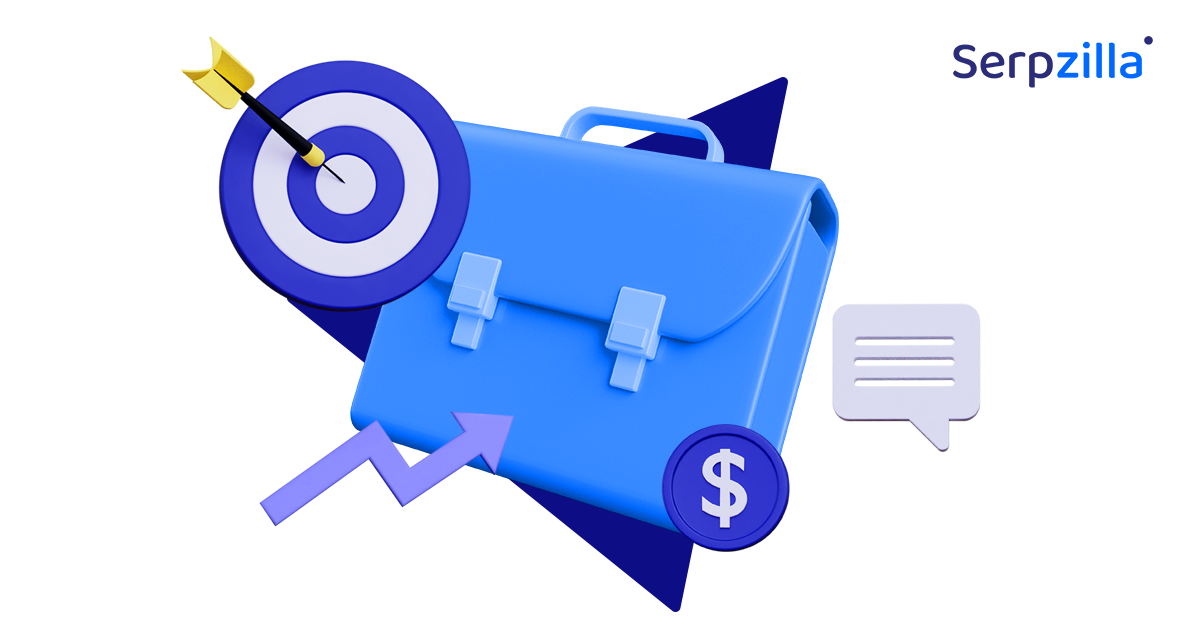The Google search algorithm started out with links as its building blocks.
Links were crucial in determining the authority and the inherent worth of a website. Links also counted as “votes” via which a website passed on part of its authority or worth to other sites.
And so, link building became a priority for SEOs to build more links to their websites as well as measure the quality and effectiveness of these links.
Why? For that we need to take a step back and understand the fundamental metric of Google’s ranking algorithm: PageRank.
What Is PageRank?
PageRank itself is an algorithm that is used by Google to rank webpages. It measures the importance of every web page.
PageRank works by counting the number and quality of links to a page to determine a rough estimate of how important the website is. The underlying assumption is that more important websites are likely to receive more links from other websites.
PageRank was introduced over 25 years ago – the patent was filed in January 1998 and expired in January 2018. Over the course of these twenty years, Google expanded the ways in which it used PageRank to determine the relevance, authority and trustworthiness of a web page based on the links coming in and going out of it.
That is likely true even today. Here’s a screenshot from a Google document titled “How Google Fights Disinformation”:
This means that PageRank is a fundamental way of gauging the E-E-A-T factors that Google takes into account.
The biggest sign backing this hypothesis is that over the years, Google has tried their best to stop SEOs from manipulating PageRank and using it to fake authority and trust (to rank better). Here’s a chronology of the important events in the evolution of PageRank:
- 2000: PageRank started appearing in the Google Toolbar which could be displayed on any browser
- 2005: The rel=”nofollow” attribute was introduced to tell Google to ignore non-editorial links
- 2006: The original PageRank formula was changed
- 2009: Google announced that PageRank sculpting no longer worked
- 2012: Google launched the Penguin algorithm update that penalizes unnatural links
- 2012: Disavow tool introduced
- 2013: Google stopped updating toolbar PageRank
- 2016: Google clarified that 301 redirects don’t leak PageRank
- 2016: Penguin began devaluing spammy links automatically
- 2018: Google didn’t renew the PageRank patent, signaling that their implementation of PageRank must have significantly changed
- 2021: Link spam update launched
- 2022: Google announced that the SpamBrain algorithm is being used to target unnatural links
All this leads us to the ultimate question: Can you still check the PageRank of your site?
The answer is a big, resounding NO.
But don’t lose heart. There are some close alternatives that help you track and estimate the authority of your site, if not measure it outright.
What Is Site Authority and How to Measure It?
Before we attempt to measure or replicate something as complex PageRank, it pays to define what “site authority” is. The first attempt at building a search engine that used links as a measure of site authority was made by Professor Apostolos Gerasoulis and his team back in 2000. They built a search engine called Teoma that used a metric called “Subject-Specific Poplularity” to measure the authority of a web page based on the number of pages that linked to it and also had content on the same subject.
Teoma’s method of determining site authority by analyzing different clusters of sites with similar content that link to each other has gained traction over the years.
Today, all the major SEO tools have their own proprietary metrics that attempt to replicate Google’s way of measuring the authoritativeness and trustworthiness of a web page as well as that of the site as a whole. Let’s examine these one by one.
Semrush
Authority Score:
The recently updated Authority Score is a compound metric that measures the site’s overall quality, SEO performance, trustworthiness and authority based on three factors:
- Link power: The quality and quantity of backlinks that the site has
- Organic traffic: Average monthly traffic from search engines
- Spam score: What part of the site’s backlink profile is likely unnatural
The unit of measurement is a logarithmic scale with values from 0 to 100, where 0 is weakest and 100 is strongest.
Ahrefs
URL Rating (UR):
UR is Ahrefs’ PageRank clone that measures the strength of a webpage’s backlink profile. UR is measured on a logarithmic scale of 0 to 100.
DR measures the strength of the backlink profile of the website as a whole (as opposed to just a page, which is measured by UR). DR is also measured on a logarithmic scale of 0 to 100. Some factors that DR takes into account are:
- The number of referring domains linking to the site
- The DR of the referring domains
- The number of websites each referring domain links to (more outgoing links mean less DR is passed on from each link)
- Nofollow status (nofollowed links don’t pass DR)
Moz
Page Authority (PA):
Moz was one of the earliest companies to introduce PageRank-like metrics. PA is the equivalent of UR but predates it. The score is offered as part of the Moz toolbar. PA is measured on a logarithmic scale of 0 to 100.
DA is one of the first site-wide metrics that predicted how likely a site is to rank in the SERPs based on the quality and quantity of unique referring domains it has. DA is also measured on a logarithmic scale of 0 to 100.
Moz regulary updates how it calculates DA to make sure it’s not manipulated by spammy link builders. The DA index is updated roughly once a month.
Image source: https://moz.com/blog/comprehensive-analysis-domain-authority
Majestic
Trust Flow (TF):
Majestic’s TF is probably the oldest of the major site authority scores. TF is a qualitative measure weighted by the number of links from a seed set of trusted domains to a specific webpage or site. It is measured on a logarithmic scale of 0 to 100.
Citation Flow (CF):
CF is a unique score that calculates authority based on the number of links (or “citations”) to a given URL or domain. It is also measured on a logarithmic scale of 0 to 100.
How to Use Site Authority in Link Building
Site authority scores are central in your link building efforts because they give you the closest estimate to PageRank in terms of authority and trust signals. If you’re an in-house SEO, we advise you to just select a favorite metric from the four that we described here and run with it. If you’re an agency guy building links for clients, we’ve noticed that DA and DR are used more widely than the others as a benchmark.
Just make sure that you don’t use a site authority score as the only metric while choosing links. You should always look at some qualitative metrics in addition to domain authority. These could be:
- Take a manual look at the site – does it seem programmatically built or does it have a good information flow and UX? If it looks spammy, it probably is.
- Read the content of the site and form your own opinion of it. PBNs and other sites that are built purely to make money from linking out usually have low-quality or duplicate content.
- See if the site has good engagement. Do people comment on their blog posts?
- Finally, don’t forget to check organic traffic. It is perhaps the most important metric other than site authority. How much is the monthly traffic to the site? Is it trending up or down?
- Also check how many keywords (especially other keywords related to your industry) the site is ranking for.
Serpzilla offers you the ability to do all of the above, regardless of your favorite site authority or link metric. All these options (and more) can be found in the filters:
If you’d like to be very sure that you’re choosing truly trustworthy sites, specify a minimum metric for DA, DR, CF and TF. 40+ is a good score to start with if you want high-value links, while 20+ could be sufficient if other metrics such as organic traffic are good enough.
Do look at how the authority metrics are trending while you buy links. This is very important and can prove very fruitful to you if you’re smart about it. For example, if you buy a link from a DR 10 site today for $10. Based on its content and engagement, you estimate that it will certainly grow in trust, authority and relevance in the future. Six months down the line, your predictions prove correct and you find it has a DR of 40. In this case, the value of your link has grown exponentially (because it’s a logarithmic scale).
If you can get good at this (Serpzilla’s auto mode can help), eventually you need not chase sites with authority scores of 70 or more. You can identify good sites in their early stages of growth and get links from them instead of a stagnant DR 75 site for an exorbitantly high price.
Boost your SEO results! Link building has become fast and easy with Serpzilla. Buy quality backlinks on authority websites with high DR.

Over to You
Site authority is a wholesome metric based on content as well as links – the two pillars of SEO. For this reason, it will remain central to SEO in its entirety. SEOs and marketers who understand how trust and authority flows through the web will find no problem in taking their sites to the top of Google – and keeping it there.









